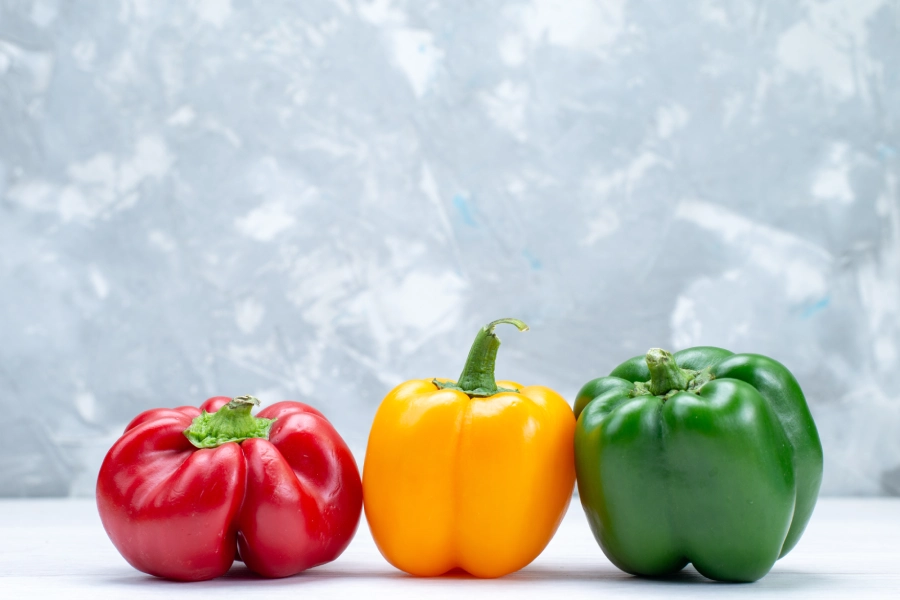In the realm of vibrant produce, few vegetables offer the visual appeal and culinary versatility quite like bell peppers. Whether they’re adding a burst of color to salads, enhancing the flavor profile of stir-fries, or simply enjoyed raw as a crunchy snack, bell peppers are a kitchen staple loved by chefs and home cooks alike. If you’re in the market for wholesale bell peppers, understanding both quality and pricing can make a significant difference in your culinary ventures and business endeavors.
Quality Matters
When it comes to wholesale bell peppers, prioritizing quality is non-negotiable. Opting for fresh, crisp peppers not only enhances the taste and texture of your dishes but also reflects positively on your business reputation. Here’s what to look for when sourcing wholesale bell peppers:
Colorful Appearance: Wholesale bell peppers should boast vibrant hues, including shades of red, green, yellow, and orange. Avoid peppers with dull or wrinkled skin, as these signs may indicate aging or inferior quality.
Firm Texture: Gently squeeze the bell peppers to ensure they feel firm and taut. Soft spots or spongy areas could indicate spoilage or overripeness.
Healthy Stems and Caps: Check that the stems are green and intact, without any signs of wilting or browning. Similarly, inspect the caps for freshness, ensuring they are free from mold or discoloration.
Consistent Size and Shape: While bell peppers naturally vary in size and shape, aim for consistency within your wholesale batch. Uniform peppers are easier to handle and provide a more polished presentation.
By prioritizing quality in your wholesale bell pepper selection, you’re not only guaranteeing superior taste and appearance but also demonstrating your commitment to excellence to your customers. You can buy all kind of peppers like: bell peppers, chili peppers and kapia peppers in bulk.
Unlocking Competitive Bell Pepper wholesale Prices
Finding competitive wholesale prices for bell peppers can significantly impact your bottom line, allowing you to maximize profits without compromising on quality. Here’s how to navigate the pricing landscape effectively:
Establish Relationships with Suppliers: Cultivating strong relationships with reputable suppliers is key to accessing competitive wholesale prices. Regular communication and loyalty can often result in preferential pricing arrangements.
Buy in Bulk: Bulk purchasing is a tried-and-true strategy for securing favorable wholesale prices. Suppliers often offer discounts or tiered pricing structures for larger volume purchases, enabling you to save on overall costs.
Monitor Market Trends: Stay informed about market trends and seasonal fluctuations in bell pepper pricing. By timing your purchases strategically, you can capitalize on periods of lower prices and avoid potential price hikes.
Negotiate Terms: Don’t hesitate to negotiate pricing terms with your suppliers, especially if you’re a valued customer or purchasing significant quantities. Exploring flexible payment options or long-term contracts can lead to mutually beneficial agreements.
By employing these strategies, you can optimize your procurement process and ensure that you’re securing the best possible wholesale prices for bell peppers.
Conclusion: Elevate Your Culinary Creations with Premium Bell Peppers
Bell peppers are a cornerstone ingredient in countless culinary creations, from savory stews to colorful salads. By prioritizing quality and leveraging competitive pricing strategies, you can elevate your dishes while maximizing your purchasing power. Whether you’re a restaurateur, caterer, or food retailer, sourcing premium bell peppers at competitive wholesale prices is essential for success in the culinary industry. So, explore your options, build strong supplier relationships, and let the vibrant flavors of bell peppers enhance your culinary ventures.


Leave a Reply